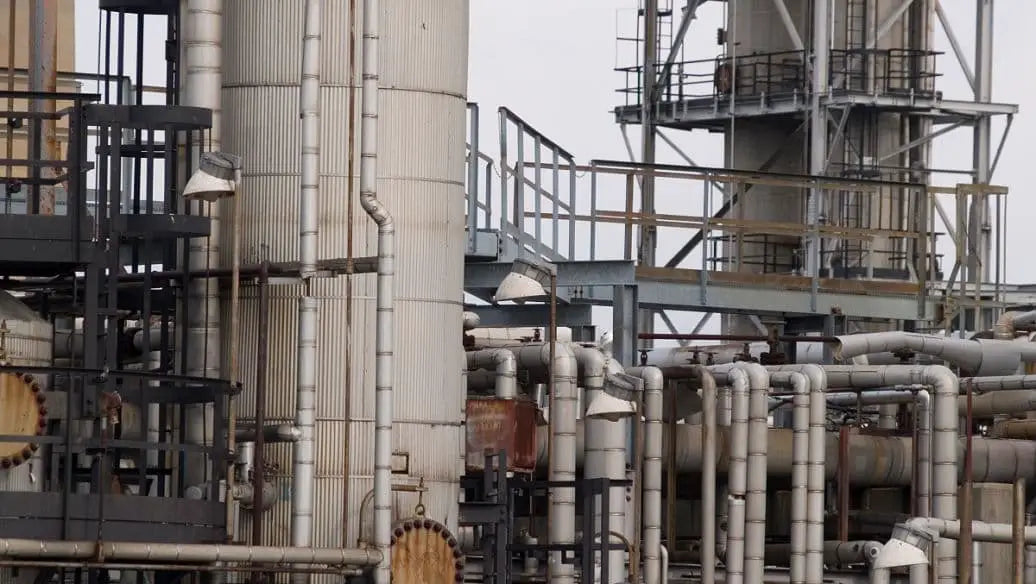Quenching and tempering treatment: The heat treatment method of high temperature tempering after quenching is called quenching and tempering treatment.
High temperature tempering refers to tempering at 500-650 ℃.
Quenching and tempering can greatly adjust the properties and materials of steel, which has good strength, plasticity and toughness, and good comprehensive mechanical properties.
Quenched sorbite is obtained after quenching and tempering.
Quenched sorbite is martensite formed during tempering.
It can be distinguished by the magnification of more than 500~600 times under optical metallographic microscope.
It is a composite structure with carbide particles (including cementite) distributed in a ferrite matrix.
It is also a tempering structure of martensite, a mixture of ferrite and granular carbide.

At this time, ferrite basically has no carbon supersaturation, and carbide is also a stable carbide, which is a kind of equilibrium structure at room temperature.
Quenched and tempered steel includes carbon quenched and tempered steel and alloy quenched and tempered steel.
Whether it is carbon steel or alloy steel, its carbon content is strictly controlled.
If the carbon content is too high, the strength of the quenched and tempered part is high, but the toughness is not sufficient.
If the carbon content is too low, the toughness improves and the strength is not sufficient.
In order to achieve good comprehensive performance of quenched and tempered parts, the carbon content is generally controlled at 0.30 ~ 0.50%.
During quenching, tempering and quenching, the entire section of the part must be hardened to obtain a microstructure dominated by fine needle hardened martensite.
The uniformly quenched sorbite microstructure was obtained by high-temperature tempering.
It is impossible for small factories to perform metallographic analysis for each furnace.
Generally, they only perform hardness testing.
That is, the hardness after quenching must reach the quenching hardness of the material, and the hardness after tempering must be checked according to the requirements of the drawing.
Hardening and Tempering of Steel 45

Steel 45 is a medium-carbon structural steel with good cold and hot workability, good mechanical properties, low price and wide sources, so it is widely used.
Its biggest weakness is that parts with low hardenability, large section dimensions and high requirements should not be used.
The quenching temperature of 45 steel is A3+(30~50) ℃. In actual operation, the upper limit is generally considered.
Higher quenching temperature can accelerate the heating of the workpiece, reduce surface oxidation and improve work efficiency.
To homogenize the austenite of the part, a sufficient waiting time is necessary.
If the actual billing amount is large, it is necessary to extend the retention time appropriately.
Otherwise, insufficient hardness may occur due to uneven heating.
However, if the waiting time is too long, coarse grain defects and oxidation decarburization will also occur, which will affect the quenching quality.
We believe that if the furnace load is greater than predicted in the process document, the heating and insulation time should be extended by 1/5.
Since the hardenability of 45 steel is low, 10% brine solution with a high cooling rate must be used.
After the workpiece is filled with water, it must be quenched, but not cooled.
If the workpiece is cooled in brine, it may crack.
This is because when the part is cooled to about 180℃, austenite quickly turns into martensite, causing excessive structural stress.
Therefore, when the quenched part is rapidly cooled to this temperature zone, the slow cooling method should be adopted.
Because the outlet water temperature is difficult to control, it must be operated with experience.
When the workpiece in the water stops shaking, the outlet water can be cooled by air (oil cooling is better).
Furthermore, the workpiece must be dynamic and not static when entering the water.
It should move regularly according to the geometric shape of the workpiece.
The static cooling medium plus the static part will lead to uneven hardness and stress, leading to large deformations and even cracks in the part.
The hardness of quenched and tempered 45 steel parts should reach HRC56 ~ 59, and the possibility of large section is less, but it should not be lower than HRC48.
Otherwise, it means that the workpiece has not been completely hardened and sorbite or even ferrite structure may appear in the structure.
This structure is still retained in the matrix through tempering, which cannot achieve the purpose of quenching and tempering.
For high temperature tempering of 45 steel after quenching, the heating temperature is generally 560 ~ 600 ℃ and the hardness should be HRC22 ~ 34.
Since the purpose of quenching and tempering is to obtain comprehensive mechanical properties, the hardness range is relatively wide.
However, if the drawing has hardness requirements, the tempering temperature must be adjusted according to the drawing requirements to ensure hardness.
If some parts of the shaft require high strength, the hardness should be high;
However, some gears and shaft parts with keyways need to be milled and inserted after quenching and tempering, so the hardness requirements are lower.
As for tempering and heat preservation time, it depends on the hardness requirements and the size of the part.
We believe that the hardness after tempering depends on the tempering temperature and has little to do with the tempering time, but must be backpenetrated.
Generally, the tempering and heat preservation time of the part is more than one hour.

























































